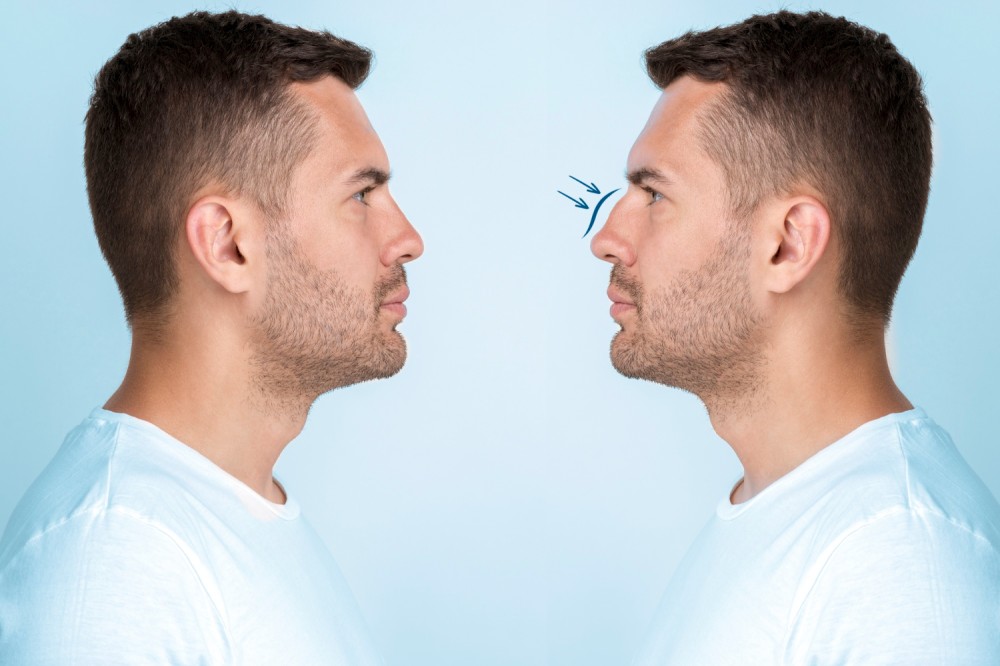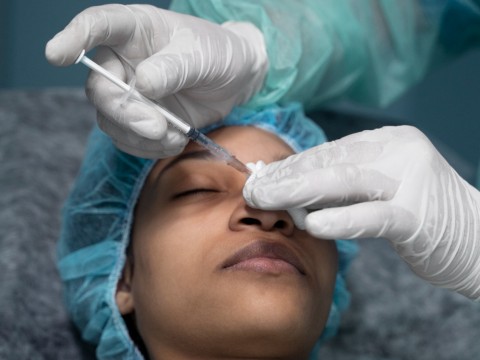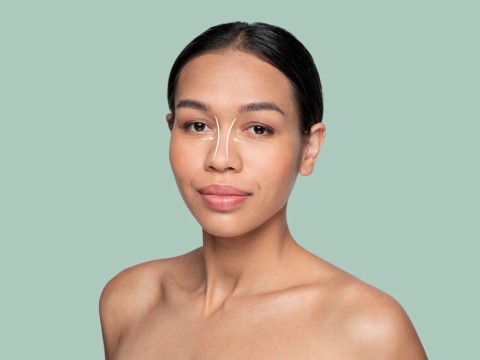Rhinoplasty is a surgical operation generally performed to reshape the form of the nose. It is done for both aesthetic and functional purposes. The following are the main aspects of rhinoplasty:
Cosmetic Rhinoplasty: This is for the enhancement in the appearance of the nose. It may involve a change in the size, shape, or proportion of one's nose to achieve a certain desirable aesthetic result. Changes may involve refining the tip, narrowing the nostrils, or adjusting the bridge of the nose.
Functional Rhinoplasty: This is aimed at improving nasal function. It corrects conditions related to nasal obstruction or difficulties in breathing, most of the time because of structural defects such as a deviated septum or enlarged turbinates.
Reconstructive Rhinoplasty: This is performed when the nose needs restoration or rebuilding due to trauma, injury, or following a surgical procedure related to skin cancer.
How it is performed: The surgery may be done under general or local anesthesia. The surgeon alters the bone and cartilage and repositions the skin over the reshaped area. The time the procedure takes will depend on how complex it may be.
Recovery: After the surgery, a few patients are likely to develop swelling, bruising, and discomfort. The period for recovery can take weeks; with time, when the swelling disappears, the result will become clear.
Risks and Considerations: Like all surgeries, rhinoplasty can involve risks related to infection, bleeding, or adverse reactions to the medications. Further, the patient might be dissatisfied with aesthetic appearance and therefore require revision surgery in certain cases. Generally speaking, rhinoplasty is a very personalized operation; patients should discuss their goals and concerns with an experienced plastic surgeon for the best results.
- Abdominal liposuction
- Arm Lift (Brachioplasty)
- Back Liposuction
- Blepharoplasty (Eyelid Surgery)
- Brazilian Butt Lift (BBL)
- Breast Augmentation
- Breast Augmentation with Tear Drop Implants
- Breast Correction
- Breast Implant Removal
- Breast Implants With Breast Lift
- Breast Lift
- Breast Reconstruction
- Breast Reduction
- Brow Lift
- Buccal Fat Extraction
- Butt Implants
- Buttock lift
- Buttock Reduction
- Cheekbone Reduction
- Chin Implant
- Health Insurance
-
Accommodation
- Online Healthy Life Assistant 9/5
- Post - Experience Follow Up 6 Month
-
Extra Privileges

- Health Insurance
-
Accommodation
- Online Healthy Life Assistant 24/7
- Post - Experience Follow Up 1 Year
- Pre-Treatment Doctor Consultation
-
Extra Privileges

 Private
Private
- Health Insurance
- Healthy Life Butler
- Post - Experience Follow Up 2 Year
- World-Famous Doctor Consultation
-
Extra Privileges
No suitable hotel found for the relevant dates!
* Price varies depending on extra and upgrade selections.
Plastic surgeries for nose are applied to everyone if they don’t have different health condition that hinder the surgery. For example, If you have a bleeding disorder, such as hemophilia, you may not be a candidate for rhinoplasty. The recommended minimum age for the procedure is typically 18 years old. This age is advised because, by 18, the nasal bone has usually fully grown, providing a more stable foundation for the surgery. However, in exceptional cases where there is a breathing impairment or other significant issues, the surgery may be considered at a younger age. The decision in such cases is typically based on the individual's specific medical needs and circumstances.
After undergoing rhinoplasty surgery, especially in the first 24 hours, you might experience some puffiness in your face, nose discomfort, and a mild headache. These are normal side effects and can be managed with pain medication. Both internal and external dressings are removed within 5-7 days. Avoid using eyeglasses or sunglasses on your nose for at least four weeks to prevent pressure. Most individuals can return to work within a week to ten days. Steer clear of strenuous exercise and contact sports for six weeks to safeguard your nose from potential injury. The new shape of your nose becomes more evident in the second week as the swelling, edema, and dark circles begin to diminish. The true transformation becomes apparent around the third month.
Rhinoplasty is generally not a painful surgery. Most people can resume their normal activities a week after the procedure. After the rhinoplasty you may experience mild pain which can be managed with painkillers.
The use of tampons in nasal surgeries is a common concern for many people. Nowadays, classic tampons are rarely used in plastic surgeries. Instead, silicon tampons are typically employed. Silicon tampons serve as a barrier between the inner and outer walls of the nose, preventing the formation of adhesions. Unlike traditional tampons, silicon tampons are soft and flexible, making their removal from the nose easy and painless.
Nose job is a surgical operation and the results are permanent.
One such option is a temporary nonsurgical nose job, often referred to as liquid rhinoplasty. Liquid rhinoplasty is a temporary solution addressing concerns like a dorsal hump, a drooping nasal tip, or asymmetry. This procedure should be performed by a skilled plastic or facial plastic surgeon. Typically, liquid rhinoplasty utilizes hyaluronic acid-based injectable fillers, the same type commonly used for cheek and lip enhancements. The procedure is quick, taking approximately 20 minutes, and the effects last between 6 to 18 months.
Although you will experience a loss of smell right after your rhinoplasty, it is important to remember that this loss is only temporary. Any smell loss is usually temporary and resolves within a few weeks.
Yes, rhinoplasty can address functional issues in addition to cosmetic concerns. Procedures such as septoplasty or turbinate reduction can be incorporated to improve nasal airflow and alleviate breathing difficulties.
In most cases, rhinoplasty is performed using incisions inside the nose (closed rhinoplasty) or with a small external incision on the columella (open rhinoplasty). Scarring is minimal and often not visible, especially with closed rhinoplasty.




